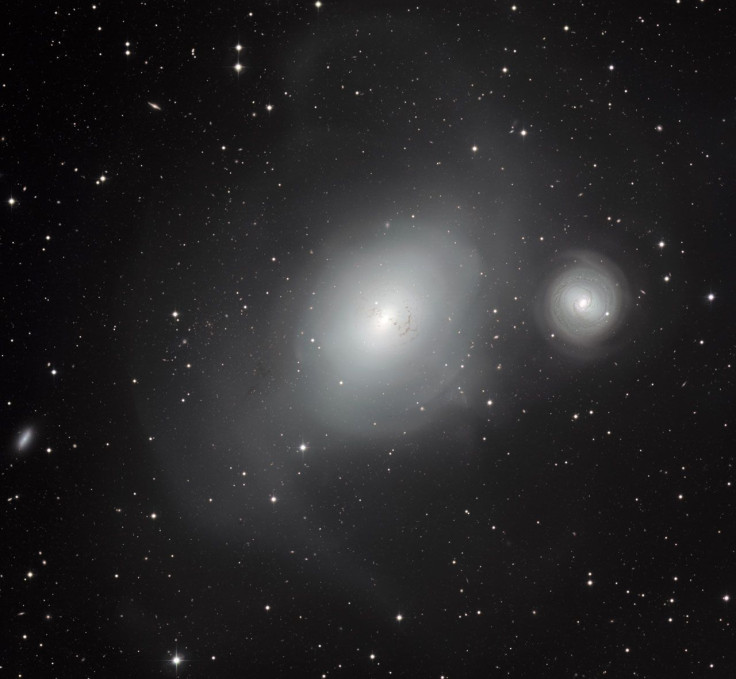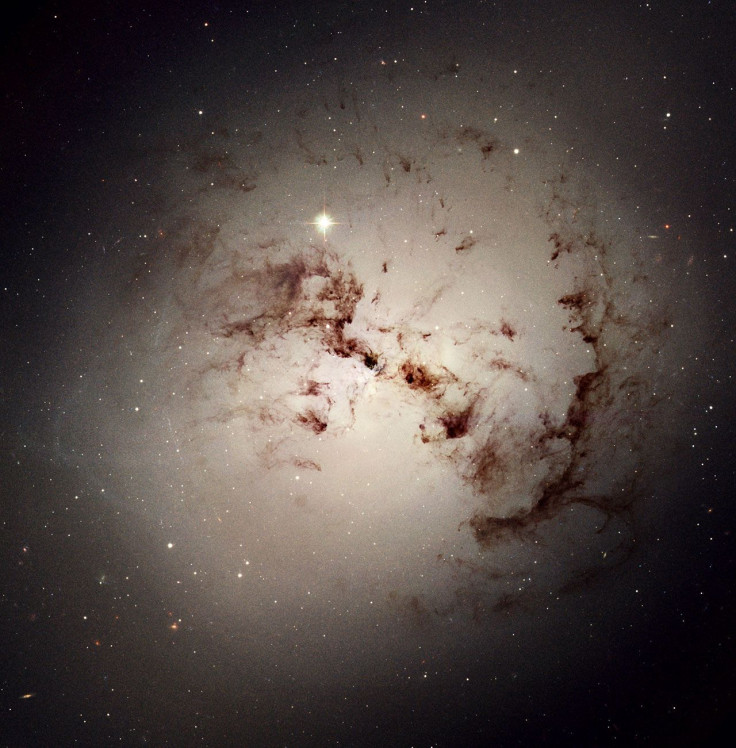The Violent History Of A Galaxy Revealed In New Image, NGC 1316 Has A ‘Killer’ Past [PHOTO]
A new photo released by the European Southern Observatory (ESO) on Wednesday tells the tale of two galaxies that may be neighbors but are completely different. Spiral galaxy NGC 1317 has lived a relatively quiet life where as NGC 1316 is described as a “serial killer” with a violent past.

The image of NGC 1316 and NGC 1317 was taken using ESO’s MPG/ESO 2.2-meter telescope at La Silla Observatory, located in Chile. NGC 1316 is an elliptical galaxy, located around 60 million light-years from Earth in the constellation of Fornax. According to ESO the NGC 1316 galaxy, also known as Fornax A, is one of the brightest radio sources, objects that are extremely bright in the radio wavelength, in the night sky. The cause for such brightness is the supermasssive black hole at the center of the NGC 136 galaxy which is devouring the surrounding dust and gas.
The telltale sign of previous galactic mergers in NGC 1316’s past are dark dust lines that are seen at the center of the galaxy. These dark streaks are evidence that NGC 1316 merged with another dust-rich galaxy in its past, approximately 3 billion years ago, notes ESO.

While the dust lanes are an indicator of at least one galactic merger, there is evidence NGC 1316 swallowed other galaxies. Tidal tails are regions of gas and stars that have been stretched due to the gravitational pull of merging galaxies. The faint tails can be seen looping outward from the galaxy. In addition to NGC 1316 and NGC 1317, there are several galaxies also present in the image. Gravitational lensing, caused by NGC 1316, bent the light of more distant galaxies around Fornax A, and can be seen to the left of NGC 1316, notes ESO.
A video zooming in on NGC 1316 and NGC 1317, courtesy of ESO, can be viewed below.
© Copyright IBTimes 2024. All rights reserved.






















